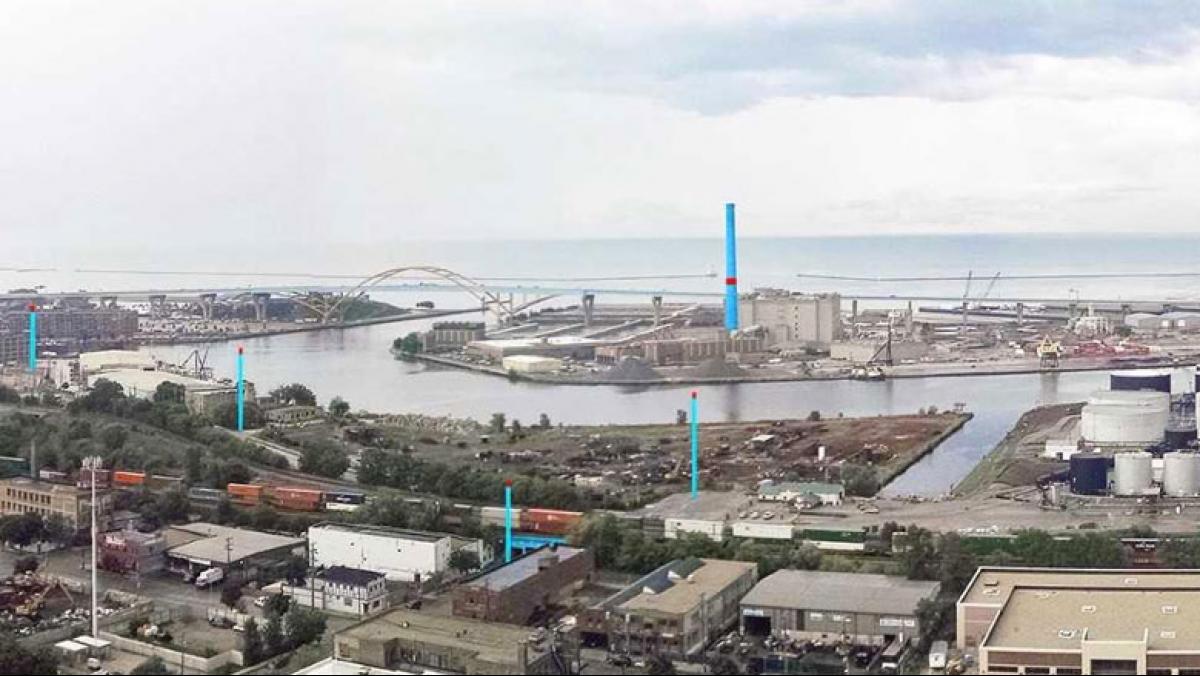Imagine a Milwaukee city skyline that not only lets you know when it will rain, but also reminds you to conserve water when it does. Watermarks: An Atlas of Water and the City of Milwaukee is a new project that proposes to do just this by using art and large-scale installation to inform and engage Milwaukeeans in city water management.
Environmental artist and Watermarks designer Mary Miss says the project aims to highlight the community’s reliance on water by collaboratively developing and implementing an urban-scaled atlas of sculptural markers that call out Milwaukee’s “water story.” While the first tier of markers will be located in Milwaukee’s Inner Harbor, at the confluence of Milwaukee’s three rivers, and on the Lake Michigan shoreline, Miss says the project will expand organically over time and ripple throughout the city.
Construction on Watermarks begins in 2018 with several striking focal points, including a light sculpture on the 350-foot smokestack at the Jones Island Water Reclamation Facility. Located just south of downtown and visible from much of the city, the smokestack will become the project’s central beacon, glowing blue in the night. When rain is forecast, the smokestack will glow red, reminding community members to restrict water use and thereby help the city avoid storm sewer overflows that can pollute Lake Michigan and surrounding beaches.
A secondary series of up to twenty human-scaled sculptural markers called focal points will be installed at sites throughout the Inner Harbor District, Walker’s Point, and Walker Square neighborhoods. Developed by schools, community groups, and local agencies in partnership with artists and designers, these focal points will provide a shared visual language for the project as well as water stories and information that can be accessed through a downloadable Watermarks app.
According to Miss, Watermarks is meant “to increase water IQ of citizens” by creating “place-based experiences” that make the story of water come alive. A large group of project partners and funders, including the Haggerty Museum of Art (Marquette University), Milwaukee Metropolitan Sewerage District, Milwaukee Arts Board, and others, believe that people who see the markers will feel a greater sense of responsibility for—and understanding of—how water quality is connected to everyday choices we make.




